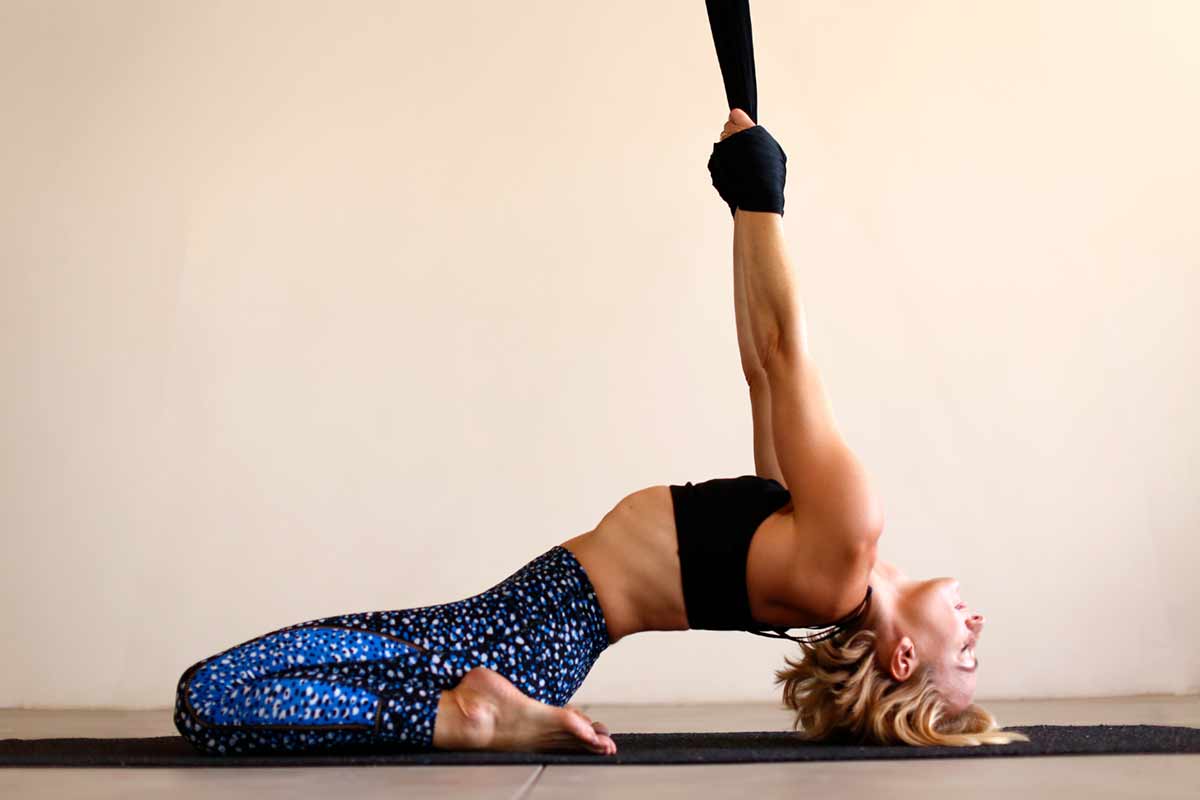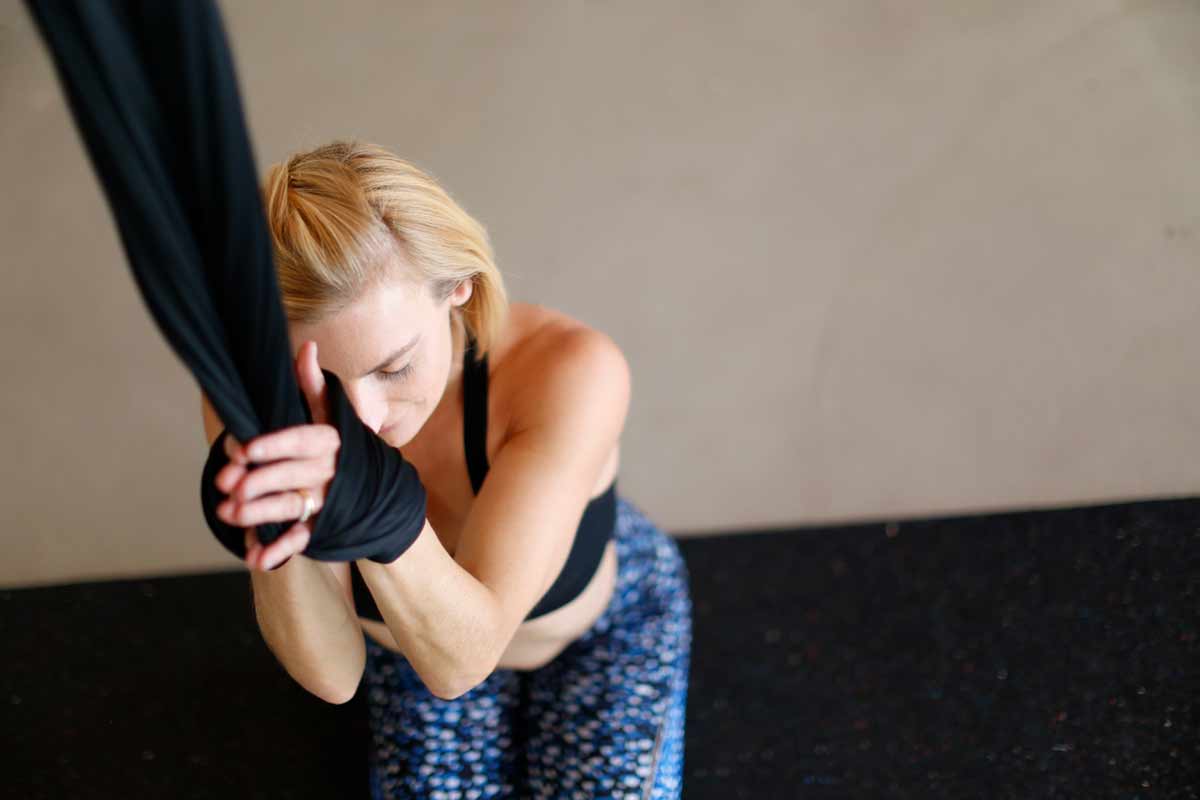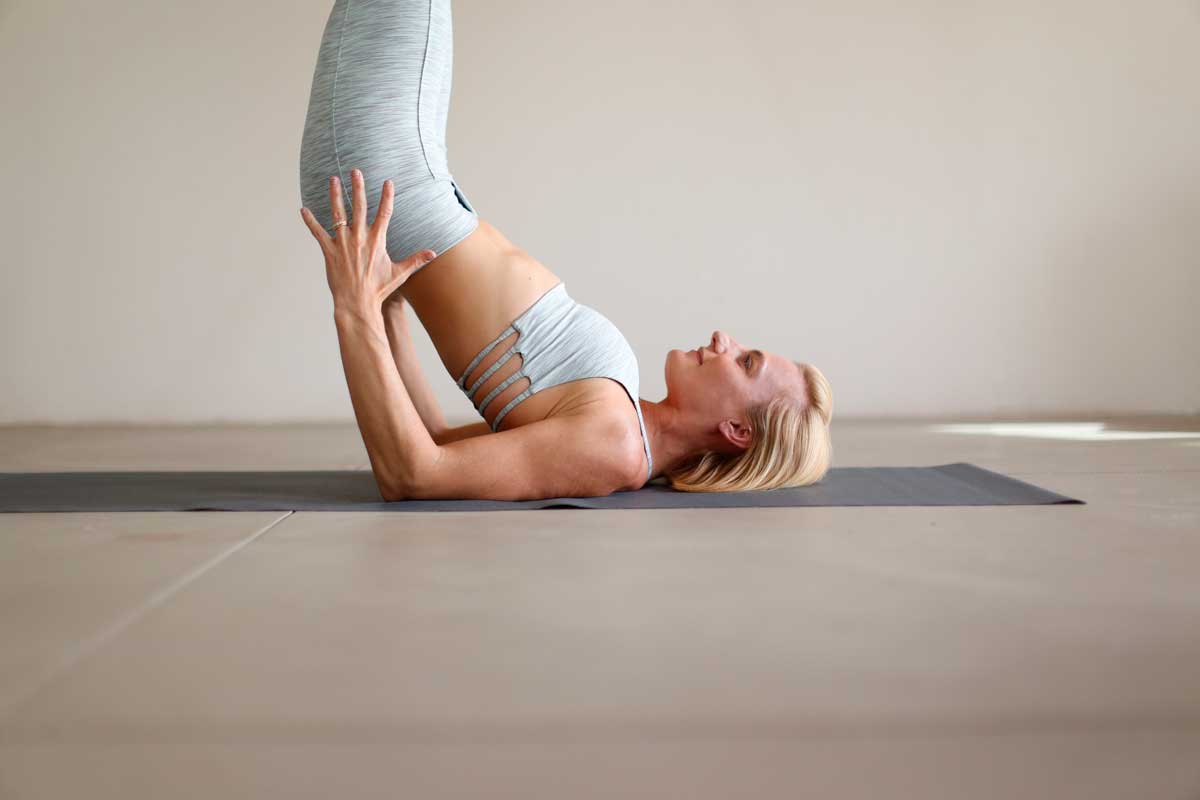Yoga CAN be Dangerous
By Carmen Curtis
Yoga & Asana | The Forest & The Tree.
As a former gymnast and professional aerialist, I am not risk-averse.
For decades, I rigorously trained my body to flex & fold. I taught my mind to perform under pressure. Ultimately pushing my whole being to fly & defy the wonders of the mind. Along the way, I found yoga as a practice. It healed my body from competitive gymnastics and extreme acrobatics.
Yet, with all the beautiful ways that yoga can heal and reset both our bodies and our minds it is important to remember that yoga can also be dangerous if done incorrectly.
My Journey
During college, yoga practice was just bubbling up. It could only be found in the hip scenes of coastal Los Angeles and New York. It was very new. At that time, the accordion had not yet been squeezed. Yoga had not yet found its way to the cities between these coastal trendsetters.
I practiced yoga at the advice of my Gymnastics Coach. In an attempt to heal my over-trained muscles, and correct imbalances. I used it to soothe both my body & mind of the chronic stress that competition fosters.
During this time, the country embraced the movement aspect of yoga; asana. The whole of the ancient spiritual & healing practice was whittled down from 8 limbs to this single limb. This served the waxing superficial needs of Western Culture. Consequently, the subtle aspects of yoga have played second fiddle to movement. Subtle aspects like ethics, philosophy, breath-work, and meditation lost. (Although I applaud the recent groundswell of conversation around the last two.) In the US, asana is now generally used to define yoga. This emphasis only mirrors our hyper-physique-focused culture.
BUT, when practiced with ego, YOGA HURTS.
Then came the onslaught of glossy media & social media channel buzz. As a result, people began to want to look like the pictures they see on Instagram and the covers of magazines. Many people began to compromise their body to emulate the slender gal posing with presumed ease. Unfortunately, this endeavor comes with great consequence. By compromising the structural health of our bodies, we create habits that invite risk.
Because our muscles have a memory the ability to reassess, withhold, and relearn takes discipline. Often this process fights the nature of the ego. The drive to be heard, seen, and applauded, push us to go further than the physical body allows. For this reason, yoga CAN be Dangerous


I’m Guilty, too!
Many Teachers, myself included, have experienced the battle of the ego. For me, it was Natarajasana or Lord of the Dance Pose. I was stronger, more flexible, and closer to achieving the full expression on one side. As a result, I over-practiced that side ultimately, causing pain and imbalance.
As I became more aware of my imbalances, I changed. I began to work on entering into the posture with strength and alignment. These types of changes helped me create longevity in my career. By not over stressing, stretching, or straining just to please my ego.
Injury comes in many forms. | Three Habits That Lead to Injury.
1. Repetitive performance of a misaligned posture.
The result: muscles memorize the incorrect form.
Over time, this strains other areas like connective tissue around joints. It also pulls the body out of healthy structural alignment. Ultimately causing pain, as well as acute and chronic injury.
2. Repetitive performance of a posture on one side.
The result: an imbalance in the structure & balanced strength of the body.
Our body is built to work in synergy — right with left, front with back, top with bottom. When this is compromised, it causes strain in the overworked area. Eventually this causes weakness in the under-worked area. As a result this creates higher susceptibility to injury, and eventually chronic injury.
3. Reluctance to use props.
Props assist in myriad ways (see below). When props are offered, students become educated on how to use them. We often insist that we do not need the assist. Then we overreach, strain, compress, and compromise our bodies by putting ourselves in unsafe places. All this for the ego or INSTA shot?
As teachers, we have the responsibility to create a safe space.
It is our highest responsibility to guide students through healthy & safe variations of each posture. To offer modifications for skill level, body type, age, injury, and life stage. We need to create safe spaces and establish boundaries. Furthermore, we need to invite healthy challenges, provide space for choice, and honor the individual’s decision. As teachers, we must continue to educate ourselves. The teacher is always a student. Learn your students‘ needs. Share more modifications. Teach for each body type and life-stage. Provide instructive support for all mentalities and mindsets.
Go back to the basics. The yoga posture has three stages: entry, expression, and exit. Be safe in all three and slow down. Give efficient and specific queues. Then, watch your class to ensure they understand your instruction. Allow students the time to find their alignment in each posture to experience the benefits of each expression.

Props for Props!
USE PROPS! Many people do not have the strength, flexibility, or range of motion to safely do yoga poses. Sometimes people lack balance or self-awareness. Other people have physical limitations or proportions that inhibit their ability to safely access postures. Yoga takes hours, days, and years of practice. It is a lifetime of learning & development. Props allow more people to practice yoga. They allow people to access postures they never would have been able to.
Blocks, blankets, bolsters, straps, and hammocks all allow students to experience the benefits of extension, expansion, opening, binding, decompression, and inversion without compromise. They support, guide, balance, strengthen, and can even challenge in a healthy way. Blocks & straps act as an extension of your arm. Blankets support joints. Bolsters provide elevation. The aerial hammock supports body weight, reveals misalignment, and sheds light on imbalances. The hammock can also help progress postures, and create a healthy challenge.
When practiced intelligently, yoga heals.
Yoga offers profound physical and mental benefits when postures are practiced correctly. Proper alignment and listening to your body is critical. Yoga teaches you to hear your inner teacher and listen. To know the difference between sensation and pain. This means every time you practice will be different. Modifications are healthy. Remember, you don’t ever have to do the full expression of a pose, not on any given day and perhaps ever. Some postures may not be healthy for you.
Yoga is a lifelong practice. It is a journey of self-discovery and revelation. You must do the work, be present in your practice,and patient with the process.

